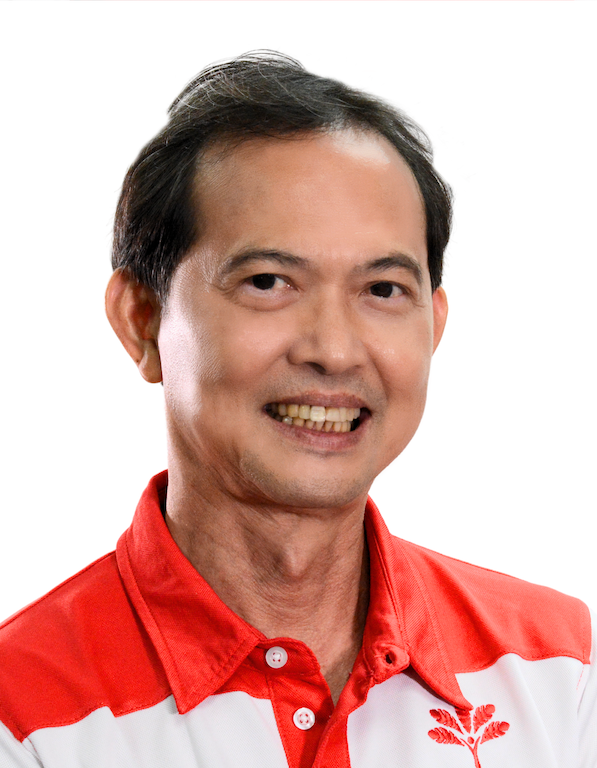Madam Deputy Speaker,
The Progress Singapore Party (PSP) supports the Motion, which calls on the House to support healthcare beyond the COVID-19 pandemic and the whole-of-Government effort in consistent and sustainable support of Singapore’s healthcare system.
The PSP once again thanks all healthcare workers for their sacrifices and dedication to serving Singaporeans, especially during the past three years of the pandemic.
We welcome the Government’s move to support healthcare through the Healthier SG initiative, which shifts away from a transactional system that reactively cares for those who are already sick towards an outcome-based system aimed at preventing Singaporeans from falling ill.
Honourable members, Dr Tan Yia Swam, Dr Shahira Abdullah and Mr Abdul Samad have spoken passionately about grounds up improvement involving doctors, healthcare workers, patients and society at large.
We support the improvements they have proposed but we also think that they can be better realised if we first reform the healthcare financing system and bring healthcare cost under control.
PSP defines sustainability in healthcare as must providing the most effective healthcare to all Singaporeans that is affordable and equitable. The focus should not be on protecting the Government’s coffers alone but on how to put in place a healthcare system that provides the right incentives to encourage healthy living and covers all Singaporeans for all medical circumstances throughout their lives.
Affordability and Equity
Currently, Singaporeans shoulder much of the costs of healthcare through their MediSave savings, their children’s MediSave savings, payments from MediShield Life, private insurance and cash outlays.
I acknowledge that over the past decade, the Government has spent more on healthcare with the introduction of schemes like the Pioneer and Merdeka Generation Packages as well as CHAS, but the actual spending of these packages is small relative to the needs of some Singaporeans of the Pioneer and Merdeka generations who do not have much MediSave savings. The actual spending is also small relative to the total assets of the Pioneer Generation Fund and the Merdeka Generation Fund.
Overall, the Government has not contributed enough to cover healthcare expenditure. According to the World Health Organisation, the share of health expenditure covered by our government has increased from 33% in 2011 to 43% in 2019, but this is still much lower than the OECD average, where 75% of healthcare spending is paid for by the Government.
Singaporeans are experiencing First World healthcare costs but receiving less than First World financial support from the Government.
Healthcare spending has more than doubled over the past two decades. It is not sustainable for Singaporeans to continue footing much of their healthcare bills as well as those of their parents and children. To reduce social inequality, the Government must do more to help Singaporeans cope with rising healthcare costs and strengthen their financial security.
People do not choose to fall ill, whether they are rich or poor. While a wealthier family can handle a medical catastrophe better, a similar catastrophe can easily wipe out the MediSave and cash savings of a low-income family, even after MediShield payouts.
Recommendations on reducing the financial burden of healthcare
As a result, Madam, I would like to make three recommendations to reduce the financial burden of healthcare for Singaporeans.
(1) The Government should pay for MediShield and CareShield Life Premiums for all Singapore Citizens
Retirement adequacy for Singaporeans is a perennial issue. First, housing costs depletes most of their CPF savings, so many Singaporeans must continue to work beyond retirement age to survive without selling their HDB flats. Insurance premiums take up another chunk of their CPF savings which could have been used for retirement.
In my Budget 2021 speech, I estimated that the total MediShield and CareShield premium paid by a family of four, up to 65 years of age for the parents, and 25 years of age for the two children, will drain at least $110,000 from the parents’ CPF savings, not including the loss in compound interest over the years, at current premium levels.
If the premium increases by 10% every five years, which is highly possible, the financial drain could be more than $250,000. In other words, if the family did not need to pay the MediShield and CareShield premiums, the parents would have more than $250,000 extra CPF savings for retirement at age 65.
I repeat my call from the 2021 Budget debate and urge the Government to fund MediShield Life and CareShield Life premiums for all Singapore Citizens. This will increase Government’s expenditure by about $3 billion a year but this means the CPF balances of Singaporeans will increase correspondingly by that amount. This will allow the average Singaporeans to have their MediSave balances enjoy the compound effect of the CPF interest for a longer period and be better prepared for a medical event.
Healthier MediSave balances would ultimately strengthen the retirement adequacy of Singaporeans because less CPF savings will need to be transferred to their MediSave Accounts.
(2) Our second recommendation is for the Government to top-up and expand the use of MediSave, increase MediFund support for needy Singaporeans, and increase Pioneer and Merdeka Generation Fund support for the older Singaporeans
As of 2020, MediSave account holders have accumulated $110 billion in balances. However, $1 billion, or less than 1%, was withdrawn for direct medical expenses that year. This is a tiny percentage, and has decreased from 2015 when $905 million or 1.2% was withdrawn from a $76 billion balance. This does not make sense given Singapore’s ageing population and increasing demand for healthcare.
The Government has always restricted withdrawals from MediSave accounts but on aggregate, Singaporeans are not even fully utilising the interest they earn each year on their MediSave balances for medical expenses, let alone their principal sums.
The withholding of MediSave monies for use by its owner is even more unjustifiable than the requirement to maintain the Minimum Sum balance for the retirement account. I therefore repeat my call for the MediSave withdrawal limit to be relaxed. I also echo my colleague Hazel Poa’s suggestion at Budget 2021 for the expansion of Medisave eligibility for outpatient treatments.
For low-income Singaporeans who have below-average Medisave balances and therefore have trouble paying medical expenses, the Government should provide more help by either topping up their Medisave accounts or increasing assistance from the MediFund substantially. Currently, the MediFund only dishes out about $100 million a year, which only covers a paltry 0.4% of Singaporeans’ total healthcare expenditure of about $25 billion a year.
The Pioneer and Merdeka Generation Funds should also increase its payout to help older Singaporeans. Since 2018, the Pioneer Generation Fund has a balance of about $7 billion, but it only pays out about $400million, or about 5-7% of its total assets, each year. The Merdeka Generation Fund has a balance of about $6 billion, but it only pays out about $200million, or about 3-5% of its total assets, each year.
(3) Our third recommendation is for the Government to centralise drug procurement across public and private medical institutions
Currently, drug procurement is centralised for Singapore’s three public healthcare clusters, but not for private medical institutions. Consequently, private clinics generally pay more for drugs than the public sector, which can negotiate good prices.
This drives up costs across the healthcare chain. Insurers must charge higher premiums to cover higher drug prices. This will cause the national healthcare expenditure to rise unsustainably.
The PSP calls on the Government to centralise drug procurement across all public and private medical institutions and distribute drugs to public and private health facilities on a not-for-profit basis. This will reduce our overall cost of drugs by maximising our bargaining power as a small nation with big pharma companies.
In the public sector, the Government should ensure that the price of drugs charged to all Singaporean patients, subsidised or non-subsidised, in public medical institutions is at or near the cost price of drugs.
The Government can provide additional subsidies to lower drug costs for subsidised patients, but drug prices should not be marked up unreasonably for non-subsidised patients to cross-subsidise the subsidised patients. It is reasonable to charge non-subsidised patients higher prices for the better services they receive, but not the drugs they take.
A centralised drug procurement system at the national level would do away with the need for sudden policy changes to control healthcare costs, provide certainty to Singaporeans, and strengthen their retirement adequacy.
Conclusion
Madam Deputy Speaker, I call on the Government to make a greater effort to address the inequalities in Singapore’s healthcare system. This can amplify the benefits brought about by initiatives such as Healthier SG.
For many Singaporeans, financial pressures from the high cost of living are a major cause of their poor health, including the growing problem of mental illnesses. If more is done to improve the affordability and equity of Singapore’s healthcare system, we can expect an improvement in the general health of Singaporeans. This should be one of the national priorities as we support healthcare beyond the COVID-19 pandemic.
Singaporeans deserve better.
For Country For People

